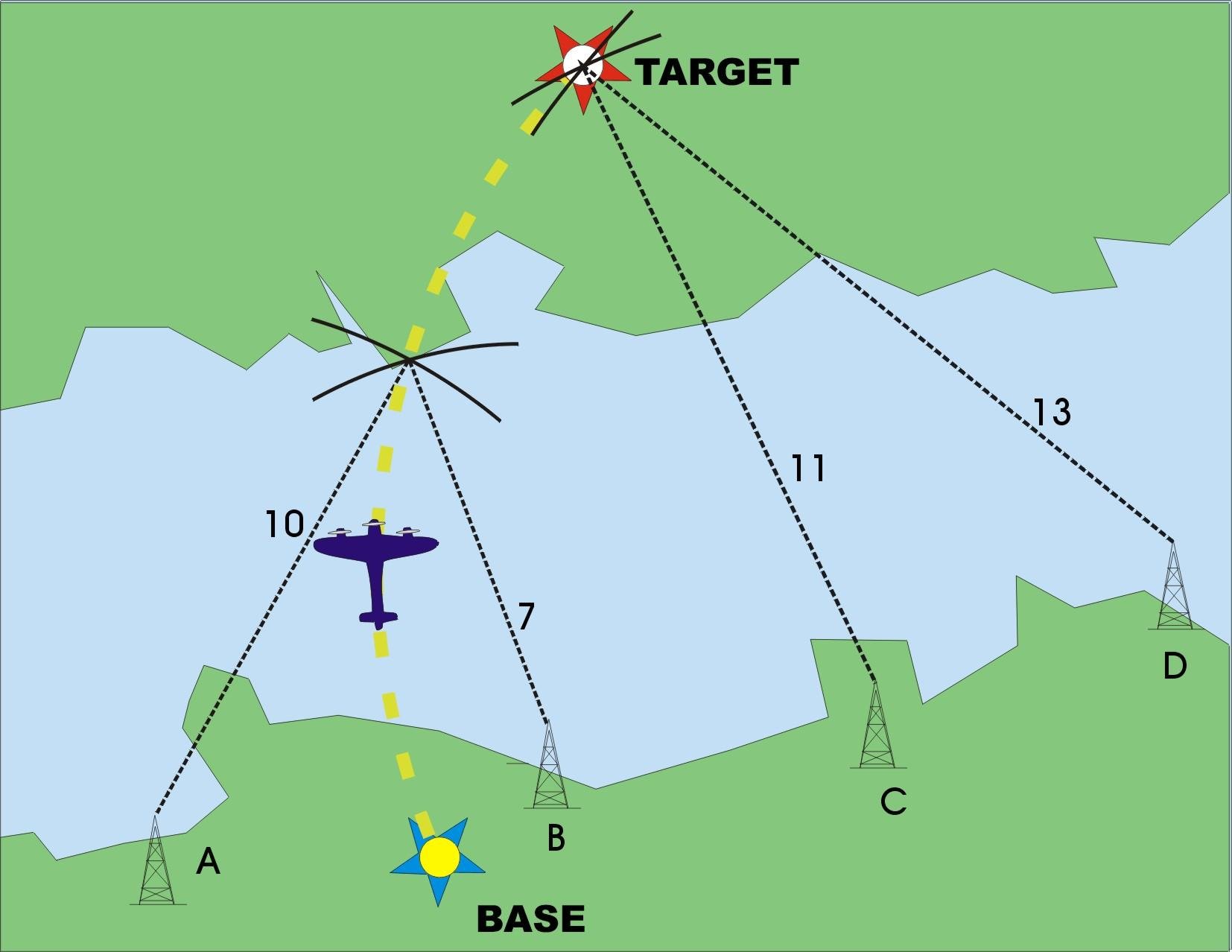A.P.Rowe & his Sunday
Soviets - The GEE system
In 1938, R.J.Dippey (working at Bawdsey) had proposed to
Watson Watt a scheme which involved a 'grid' of pulsed radio
signals that could help aeroplanes to locate and land at their
bases in poor weather conditions. He later suggested that
his system could be extended and that the 'grid' could be
laid across the whole of northern Europe and in August 1940,
authority to develop the system was given. Service trials
began in August 1941 and the system was operational by March
1942.
In August 1941, Professor Lindemann had produced a report
(the Butt report) that was highly critical of Bomber Command's
accuracy concerning raids over occupied territory. Sometimes,
only 10% of aircraft penetrated to within 10 miles of their
prescribed target. Lindemann recognized that the problem was
poor navigational techniques (such as dead-reckoning) that
were simply not accurate enough.
|
How
GEE worked (simplified)…
The system
is not a radar system because reflected echoes
are not used.
By transmitting a signal from a ground station,
the time it takes to reach a receiver aboard an
aircraft can be measured and the precise distance
from that station can be calculated. If 2 (or
better still, 4) stations are used, a series of
distances can be calculated and by a process similar
to triangulation, the location of the aircraft
is pinpointed.
If a desired track needs to be followed (to a
target for example), the comparative ratios from
each pair of signals must remain constant. This
will require the aircraft
to follow a hyperbolic track to the target.
The system was equally valuable in allowing
pilots to navigate accurately back from a raid.
|
|
| Schematic:
How GEE worked |
|
 |
|
In this example,
the pilot should cross the enemy
coast when the ratio of the signals from A and B
transmitters is 10:7. Transmitters C and D will
give a ratio of 11:13 when over the target.
The system became progressively less accurate
over distances in excess of 100 miles and then
other devices had to be employed…
|
|